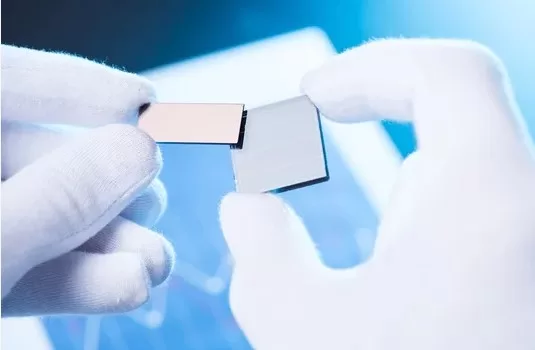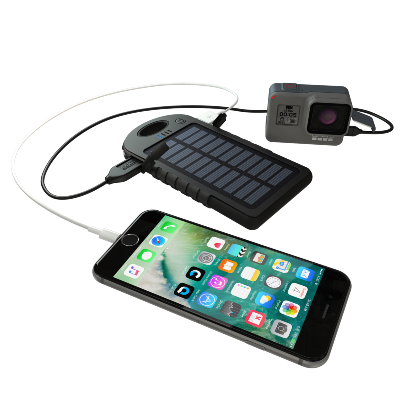Solar panels have become a popular alternative energy source in recent years. With the increasing demand for renewable energy, it’s essential to understand the different types of solar panels available on the market. Choosing the right type of solar panel can make a significant difference in the efficiency and cost-effectiveness of your solar energy system. We’ll discuss the different types of solar panels and their advantages and disadvantages.
Monocrystalline Solar Panels
Monocrystalline panels are made of high-purity silicon, which is shaped into bars and cut into wafers. They are recognizable by their black or dark-blue color. Monocrystalline solar panels are known for their high efficiency and long lifespan. They can produce more power per square foot than other types of solar panels. However, they are also the most expensive option on the market. Read More
Polycrystalline Solar Panels
Polycrystalline panels are made from multiple silicon fragments melted together to form a single panel. They are easily recognizable by their blue speckled appearance. Polycrystalline solar panels are less efficient than monocrystalline solar panels but are also less expensive. They have a shorter lifespan but are still a good option for those on a budget. Read More
Thin-Film Solar Panels
Thin-film panels are made from a layer of semiconductor material that is deposited on a substrate such as glass or plastic. They are less efficient than crystalline solar panels but are also less expensive. They are also lightweight and flexible, making them a good option for portable solar panels. Thin-film solar panels are also more resistant to shade and high temperatures than crystalline solar panels. Read More

Flexible solar panels
Flexible panels are thin and lightweight, making them easy to install and transport. They are designed to be flexible and can be used on curved surfaces or irregularly shaped areas where traditional solar panels may not be suitable. Flexible solar panels come in different sizes and capacities, and their efficiency can vary depending on the quality of the panel and the amount of sunlight available. They are a good option for portable solar panels or for incorporating solar energy into building design. Read More
Concentrated PV Solar Panels
Concentrated PV panels use lenses or mirrors to focus sunlight onto a small area of solar cells. This allows them to produce more electricity per square foot than other types of solar panels. However, they also require a tracking system to follow the sun’s path, which can be expensive. Concentrated PV solar panels are mostly used for large commercial solar power plants. Read More
Bifacial Solar Panels
Bifacial solar panels have solar cells on both sides of the panel. This allows them to capture sunlight reflected off the ground or other surfaces, increasing their efficiency. They are also more resistant to shading and high temperatures than other types of solar panels. However, they are more expensive than other types of solar panels and require a special mounting system to allow light to reach both sides of the panel. Read More
Hybrid Solar Panels
Hybrid solar panels are a combination of different types of solar cells, such as crystalline and thin-film solar cells. They are designed to increase the efficiency and cost-effectiveness of a solar energy system. However, they are also more complex and expensive than other types of solar panels. Read More
Building-Integrated Photovoltaics (BIPV)
Building-Integrated Photovoltaics (BIPV) are solar panels that are integrated into a building’s structure. They can be installed on roofs, walls, or even windows. BIPV systems are designed to blend in with the surrounding architecture, making them a popular option for those who want to incorporate solar energy into their building design. BIPV systems are also very efficient and can reduce the overall energy consumption of a building. Read More
Portable Solar Panels
Portable panels are compact and lightweight, making them easy to transport and set up. They are a great option for outdoor activities, such as camping or hiking, and can provide a source of power for charging devices or running small appliances. Portable solar panels come in different sizes and capacities, and their efficiency can vary depending on the quality of the panel and the amount of sunlight available. Read More

Comparing the Different Types of Solar Panels
When comparing the different types of solar panels, there are a few factors to consider, such as efficiency, cost, lifespan, and durability. Monocrystalline solar panels are the most efficient but also the most expensive. Polycrystalline solar panels are less efficient but more affordable. Thin-film solar panels are less efficient than crystalline panels but are also cheaper and more flexible. Concentrated PV solar panels are very efficient but require a tracking system and are mostly used for large-scale solar power plants. Bifacial solar panels are very efficient and resistant to shading and high temperatures, but are also more expensive. Hybrid solar panels combine different types of solar cells to increase efficiency but are also more complex and expensive. Building-Integrated Photovoltaics (BIPV) are efficient and aesthetically pleasing but can be more expensive than traditional solar panels.
Factors to Consider When Choosing Solar Panels
When choosing solar panels, there are a few factors to consider, such as the amount of energy you need, your budget, and the available space for installation. It’s important to choose solar panels that can produce enough energy to meet your needs. You should also consider the upfront cost and the long-term savings of different types of solar panels. Finally, you should make sure that you have enough space and proper installation conditions for your solar panels.
Advantages and Disadvantages of Solar Panels
Solar panels have many advantages, such as reducing your carbon footprint, lowering your energy bills, and increasing the value of your property. They also have a long lifespan and require little maintenance. However, solar panels can be expensive to install and may not be suitable for all homes or buildings. They also require adequate sunlight and can be affected by weather conditions such as shade, snow, or hail.
Installation and Maintenance of Solar Panels
Installing solar panels requires professional installation to ensure that they are properly mounted and wired. It’s important to choose a reputable solar panel installer and to make sure that they have the necessary certifications and experience. Solar panels also require little maintenance, but you should check them regularly for any damage or debris that may affect their efficiency.
Conclusion
Choosing the right type of solar panel can make a significant difference in the efficiency and cost-effectiveness of your solar energy system. There are many types of solar panels available on the market, each with its own advantages and disadvantages. When choosing solar panels, it’s important to consider factors such as efficiency, cost, lifespan, and durability. It’s also important to choose a reputable solar panel installer and to check your solar panels regularly for any damage or debris that may affect their efficiency.
FAQs
Are solar panels worth the investment?
Yes, solar panels are a worthwhile investment for many homeowners and businesses. They can significantly reduce your energy bills and carbon footprint, and increase the value of your property. Additionally, many governments offer incentives and tax credits for installing solar panels, which can help offset the upfront cost.
How long do solar panels last?
Solar panels are designed to last for 25 to 30 years, but their lifespan can vary depending on the quality of the panels and the installation. Regular maintenance and cleaning can also help extend the lifespan of your solar panels.
Can solar panels be installed on any type of roof?
Solar panels can be installed on most types of roofs, including shingle, metal, tile, and flat roofs. However, the installation process may vary depending on the type of roof, and additional structural support may be needed for heavier solar panels.
How much energy can solar panels produce?
The amount of energy that solar panels can produce depends on several factors, such as the size and efficiency of the panels, the location and orientation of the solar array, and the amount of sunlight available. On average, a standard 6 kW solar panel system can produce around 8,000 to 12,000 kWh per year.
Do I need a battery with my solar panels?
While it’s not necessary to have a battery with your solar panels, it can be beneficial if you want to store excess energy for use during times when the sun is not shining. A battery can also provide backup power in case of a power outage. However, adding a battery to your solar energy system can increase the upfront cost.